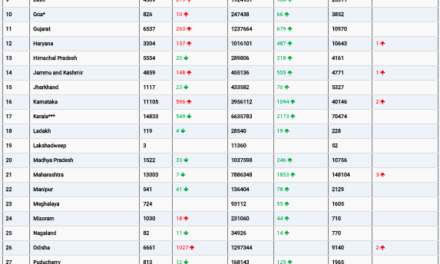Copenhagen, Denmark – Engaging in moderate to vigorous physical activity during leisure time can significantly reduce the risk of developing type 2 diabetes, regardless of an individual’s level of occupational physical activity. These findings come from a new study published in the American Journal of Preventive Medicine and add to the growing body of evidence that simple lifestyle modifications can play a crucial role in preventing chronic diseases.
Study Highlights Importance of Recreational Exercise
The research, led by Anna Stage, MSc, from the Center for Clinical Research and Prevention at Frederiksberg and Bispebjerg Hospital, Denmark, analyzed data from 5,866 working adults aged 30–60 within the Inter99 cohort. The study assessed participants’ levels of occupational and leisure-time physical activity, alongside their type 2 diabetes status, using data from the Danish Diabetes Register spanning from 1996 to 2020.
The key findings of the study include:
- Leisure-time physical activity at moderate to vigorous intensity was significantly associated with a lower risk of type 2 diabetes.
- Sedentary leisure activities, such as watching TV or reading, when combined with physically demanding work, were linked to an increased risk of type 2 diabetes.
- Strenuous physical activity at work may contribute to diabetes incidence, though this finding was not statistically significant.
- Engaging in moderate to vigorous leisure-time physical activity, regardless of occupational activity level, provided a protective effect against type 2 diabetes.
Challenging the ‘Physical Activity Health Paradox’
The study’s findings support the concept of the ‘Physical Activity Health Paradox,’ which suggests that while leisure-time physical activity offers health benefits, occupational physical activity does not necessarily confer the same protective effects.
“The World Health Organization (WHO) guidelines currently do not distinguish between work-related and leisure-time physical activity,” Stage noted. “This could send a misleading message that physical exertion during work hours is sufficient to meet recommended activity levels. However, our study highlights that moderate to vigorous activity during leisure time is essential for reducing the risk of type 2 diabetes.”
Implications for Public Health
With the global prevalence of type 2 diabetes having more than doubled over the past decade, the study emphasizes the importance of encouraging recreational physical activity. Experts suggest that public health initiatives should focus on promoting accessible and enjoyable forms of exercise to combat the rising incidence of the disease.
As researchers continue to investigate the long-term impacts of different types of physical activity on health outcomes, this study reinforces the need for individuals to incorporate moderate to vigorous leisure-time exercise into their routines to protect against type 2 diabetes and other noncommunicable diseases.
Disclaimer:
This article is for informational purposes only and should not be considered medical advice. Readers should consult healthcare professionals before making any changes to their exercise routines or health management strategies.











